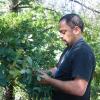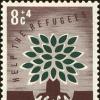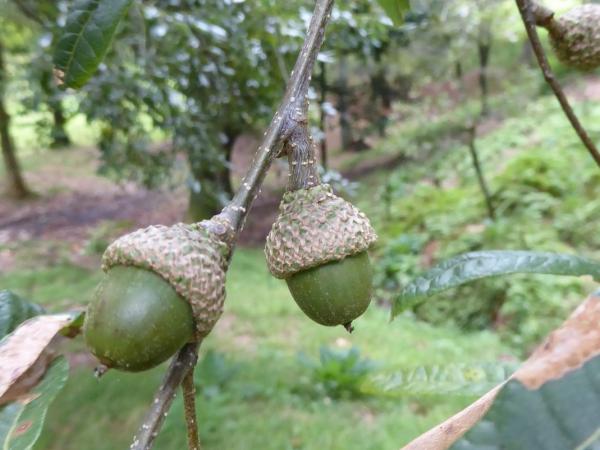Editor's Picks
Plant Focus
OC&R Committee Announces First Round of Grant Funding
The IOS created the Oak Conservation and Research Fund in 2019 thanks to a generous donation by long-time members Mark and Jolly Krautmann. The IOS then offered members an opportunity to match their generosity. Several responded by giving funds to support research in the following areas: habitat restoration, ex-situ conservation, field surveying and population monitoring, education, and population reintroduction and reinforcement.
The Committee made a call for proposals and then went to work evaluating the applications with an advisory group of experts led by Committee member Dr. Murphy Westwood, who authored the request for proposals and established a rating system to review the projects.
We are pleased to announce the following awards:
Oak Conservation in Laos
Project Contact: Phetlasy Souladeth, Research Faculty of Forest Science, National University of Laos, Dongdok Campus, Xaythany District, Vientiane Capital, Laos.
Amount Awarded ($5,000)
Project Summary: Laos, located in the center of the Indochina Peninsula, is a biodiversity hotspot. Yet focused studies of plant diversity are incomplete, and further intensive inventories of particular groups are required. In this project, we focus on the species diversity of the genus Quercus, to identify the threatened species and to update our knowledge of the flora of Laos. To evaluate species diversity, field surveys are planned twice in year 1 (2021). All the voucher specimens of Quercus will be recorded and collected. We will make specimens for depositing in the herbaria in Laos, Vietnam, and in other countries, and take photos throughout the survey. A taxonomic treatment and a checklist for the genus will also be provided. Collected data will establish a firm foundation for further studies, including ecological and biogeographical studies. These studies will help develop conservation plans for protected areas and rare and/or threatened species. To enhance the capacity building of Lao botanists, we will organize plant identification training on the taxonomy of Fagaceae (especially in a genus Quercus) for students and young researchers of the National University of Laos and other research institutions who are interested. The project will have a great impact on updating our knowledge on the genus and strengthen the fundamental knowledge of plant taxonomy for younger students. The work will center around five oak species: Quercus austrocochinchinensis (Vulnerable), Q. kingiana (Endangered), Q. saravanensis (Data Deficient), Q, thorelii (Data Deficient), and Q. xanthotricha (Endangered)

Building Local Capacity to Monitor and Conserve Oaks in Woodlands Managed for Charcoal
Project Contact: Tuyeni Heita Mwampamba, Research Professor Level A, Institute for Ecosystems and Sustainability Research, National Autonomous University of Mexico – Campus Morelia, Mexico
Amount Awarded ($5,000)
Project Summary: Mexico is home to approximately 160 species of oak, of which 100 are endemic. Due to its dense properties, oak wood makes excellent charcoal, which is sought in Mexico and abroad for cooking, heating, and barbequing in homes and restaurants. Through the application of conventional and traditional forest management practices to enhance natural regeneration by coppicing, forest owners in Mexico manage their woodlands for charcoal. Oak woodlands and the charcoal sector are thus a significant livelihood stream for tens of thousands of families in rural and urban areas. Indeed, some would even argue that it is thanks to the vibrant and lucrative nature of the charcoal sector that oak woodlands still stand today in a (more or less) conserved state, able to withstand the pressure of more drastic and irreversible land use changes such as their conversion to avocado plantations and grazing lands.
There is genuine interest among forest owners involved in the charcoal sector to understand how their activities and practices might affect long-term forest conservation and what the sector can do to promote diverse, productive, and resilient oak woodlands. There is also interest in developing local capacities to produce oak seedlings for restoring degraded areas. However, there is very little awareness of the global importance of Mexico for oak species conservation and the landowners’ in affecting oak conservation. Additionally, local capacity to reliably identify species, monitor them across space and time, and process the information in order to identify threats and design management response is low. With more than 70% of forests in Mexico under private and community ownership, oak conservation relies on the willingness and interest of local landowners and on their ability to generate locally relevant data for informing their decisions.
The project’s aim is to generate information that forest owners involved in the charcoal sector need to make informed decisions about how to enhance oak conservation on their land. It will be carried out in one pilot site located in the State of Guanajuato, Mexico in the Santa Rosa de Lima Highlands belonging to one of the largest charcoal producers in the area. Our scientists-practitioner collaborative approach is aimed at co-designing and implementing an oak-monitoring program grounded on scientific and local knowledge.
Envisioned as the first step towards long-term monitoring of biodiversity in charcoal production areas, the monitoring data will be used to: a) improve current understanding of the status of oaks in the study area and the effect of charcoal production on species composition, health, seed production, and other population characteristics, b) develop management responses to identified threats, c) raise awareness locally and nationally on oak conservation in managed woodlands and d) plan a local nursery to test seed germination and explore the potential to generate seedlings locally for restoring degraded sites.

Advancing the Ex-Situ Conservation of Oaks Using Cryopreservation
Project Contact: Valerie C. Pence, Ph.D., Director of Plant Research, Center for Conservation and Research of Endangered Wildlife (CREW), Cincinnati Zoo & Botanical Garden, Cincinnati, Ohio.
Amount Awarded ($5,000)
Project Summary: The 500 species of oaks (Quercus spp.) are iconic trees that anchor many of our most precious ecosystems. Of the 91 species of oaks in the US, 30% are of conservation concern due to loss of habitat, disease, and climate change. Conserving oaks in their habitats is crucial, but ex-situ, or off-site, conservation is also necessary to provide insurance against the loss of those species that are endangered in the wild.
Conserving oaks is challenging, because the seeds cannot survive the drying necessary to store them in seed banks. Species with such seeds are known as exceptional species. The Center for Conservation and Research of Endangered Wildlife (CREW) at the Cincinnati Zoo & Botanical Garden has taken a special interest in exceptional plants, including oaks, and specializes in the techniques needed for their conservation.
Oaks can be conserved as trees in botanical gardens, but there are also methods available for storing plant embryos and stem cells in liquid nitrogen. These methods, known as cryopreservation, take up little space and can preserve the tissues for decades, but the use of these methods for conserving oaks is just beginning. This project is directed at applying cryopreservation to endangered oaks and providing training information to assist others in developing similar research projects.
For this project, we will be focusing on stem cell, or shoot tip, cryopreservation. We have demonstrated its feasibility with the critically endangered Quercus hinckleyi. In this project, we will work with three threatened oak species, Q. arkansana, Q. havardii, and Q. acerifolia.
This project will also include a virtual training workshop in 2021, in conjunction with an oak cryopreservation symposium being planned in collaboration with the Global Conservation Consortium for Oak (GCCO) Cryopreservation Working Group. One or more training videos will be produced and experts will be enlisted to speak and demonstrate techniques during the workshop. The videos and information produced will be posted on the Exceptional Plant Conservation Network (EPCN) and the GCCO websites, where they will be available as a resource for future researchers.
This project will leverage the expertise and resources of CREW’s work with exceptional plants to develop protocols for the three threatened oak species, significantly advancing our knowledge of how protocols may need to be modified and adapted for different oak species. It will also leverage the collaborative networks being developed in the Oak Cryopreservation Working Group and the Exceptional Plant Conservation Network, to develop a training workshop that will facilitate the development of oak research globally, meeting the challenge of conserving our oak resources into the future.

Acknowledgments
The Oak Conservation and Research Committee would like to thank the Krautmanns and our members who have enabled this critical work to move forward. We also thank Dr. Murphy Westwood for her leadership in organizing the structure and mechanics of the grant as well as assembling a talented team of reviewers listed below:
Elizabeth Thomas
Polly Hill Arboretum
Maura L. Quezada
Curadora Herbario USCG/Jardín Botánico
Centro de Estudios Conservacionistas
Universidad de San Carlos de Guatemala
Dr Joeri S. Strijk
Alliance for Conservation Tree Genomics
Dr. Min Deng
School of Ecology and Environmental Science
Yunnan University
Dr. Susana Valencia Avalos
Departamento de Biología Comparada
Universidad Nacional Autónoma de México (UNAM)
I also acknowledge the support and contributions of the IOS Board of Directors, who have brought great enthusiasm and support for the Oak Conservation and Research Fund.
IOS members will be periodically updated on the progress of these projects via our webpage and newsletter. The publication of project results will ultimately appear in future IOS Journals.











